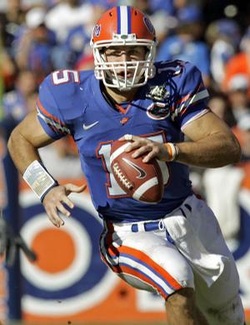
For those of you bettors who think that if you know NFL, you also know NCAA football, you are up to a big surprise. There are a lot of differences between NFL and college football. In NFL, sports bettors know that an average point spread is around seven and a huge spread is anything over 11. They also understand that the over/under for most games usually stands between 32 and 40 points. If you're an avid professional football bettor and you're thinking of doing college football betting too, you're sure to notice that point spreads and over/unders tend to be much bigger in the college ranks. There are a few reasons for this and today I will talk about this three factors. All three of these help influence the college football betting spread and over/under of each game.
National Rankings - are determined each week by two separate polls-the AP Top 25 and the USA Today Poll. If a club is favored to win that week and they lose, they can drop in the polls quickly. Additionally, if a team underperforms, they can also lose ground. In the USC-San Jose game, if the Trojans win by just a few points and don't control the contest in the manner that is expected, then voters may start to doubt exactly how good the Trojans are. Thus, unlike in the NFL where a win by one point is as good and counts the same as a blowout, college football teams are expected to exploit their power and talent each and every game. They do this by running up the score, which makes for large point spreads and high over/unders.
Non-conference Versus Conference Play - Each year, college football teams play about four regular season games outside of their conference. This can result in gross mismatches that usually lead to blowouts by the favored team but sometimes end up with an upset by the underdog. As an example, if USC, a national powerhouse in the prestigious Pac-10, plays San Jose State, a team ranked around 100th in the nation and a middling club in the Western Athletic Conference, at the start of the season chances are the superior Trojans will destroy the less talented Spartans. The USC-San Jose match up is a fairly common example of non-conference scheduling. The point spread for this game could be as high as 37 and the over/under might mushroom to 48 points or more with USC expected to score the lion's share of those points.
College Football Scheduling - Along with mismatches in non-conference games, the manner in which the NCAA football schedule is setup offers some challenges to teams and sports bettors alike. First, most non-conference games are played at the start of the season, when teams are still trying to gel. This puts teams from weaker conferences at a disadvantage, especially because the clubs from the top six national conferences-SEC, Big 10, Big 12, Big East, Pac-10 and ACC-tend to have the best talent on the field, finest coaches and best training facilities. The other glitch in the schedule occurs at the end of the regular season and prior to the start of the Bowl season. Bowl bound clubs have a four to six week layoff, which can be both positive and negative. For teams that are hurting, players have a chance to rest up and heal. However, the long interim without any competitive games can result in uneven play come bowl day. Sports bettors need to carefully analyze these aspects of the NCAA schedule, especially when it comes to potential upsets or teams underperforming.
So for all of you who want to do college football betting, you need to keep these differences in mind before putting your cash down on college football. Although it's the same basic game, the differences between NFL and NCAA Football influence point spreads and over/unders, complicating betting choices when switching from the professional to college ranks.
 RSS Feed
RSS Feed